
The Serene Beauty of Rio San Juan
Discover the pristine waterways, lush jungles, and rich history of Rio San Juan, Nicaragua's hidden gem for eco-tourists and history enthusiasts.
Nestled in the heart of Nicaragua, Rio San Juan is a haven for nature lovers and adventurers alike. This lush region is best known for its stunning waterways, diverse wildlife, and rich history. Whether you're cruising down the river or exploring the dense jungles, Rio San Juan offers an experience like no other. The river itself is a lifeline, stretching from Lake Nicaragua to the Caribbean Sea. Along the way, you'll encounter charming villages, tropical rainforests, and the famous Indio Maíz Biological Reserve. This reserve is home to countless species of birds, monkeys, and exotic plants, making it a must-visit for any eco-tourist. History buffs will be intrigued by the town of El Castillo, a historic fortress built to fend off pirates in the 17th century. The fort offers panoramic views of the river and jungle, as well as a glimpse into the region's storied past. Don't miss the local cuisine, which features fresh fish and traditional Nicaraguan dishes, providing a delicious end to your day of exploration.
Local tips in Rio San Juan
- Bring binoculars for bird watching in the Indio Maíz Biological Reserve.
- Wear comfortable shoes for walking tours around El Castillo.
- Hire a local guide to navigate the river and its hidden gems.
- Try the local dish 'Vigorón' at any riverside eatery.
- Pack insect repellent for jungle excursions.
The Serene Beauty of Rio San Juan
Nestled in the heart of Nicaragua, Rio San Juan is a haven for nature lovers and adventurers alike. This lush region is best known for its stunning waterways, diverse wildlife, and rich history. Whether you're cruising down the river or exploring the dense jungles, Rio San Juan offers an experience like no other. The river itself is a lifeline, stretching from Lake Nicaragua to the Caribbean Sea. Along the way, you'll encounter charming villages, tropical rainforests, and the famous Indio Maíz Biological Reserve. This reserve is home to countless species of birds, monkeys, and exotic plants, making it a must-visit for any eco-tourist. History buffs will be intrigued by the town of El Castillo, a historic fortress built to fend off pirates in the 17th century. The fort offers panoramic views of the river and jungle, as well as a glimpse into the region's storied past. Don't miss the local cuisine, which features fresh fish and traditional Nicaraguan dishes, providing a delicious end to your day of exploration.
When is the best time to go to Rio San Juan?
Iconic landmarks you can’t miss
Reserva Natural Ojo de Agua
Discover tranquility and natural beauty at Reserva Natural Ojo de Agua in Nicaragua, where crystal-clear springs invite relaxation and adventure.
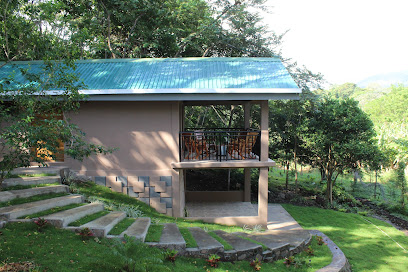
Cristo de La Misericordia
Discover the breathtaking views and serene atmosphere at Cristo de La Misericordia, a must-visit landmark in San Juan del Sur, Nicaragua.
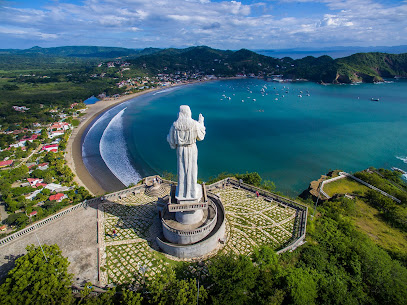
Ometepe
Explore the breathtaking beauty and rich culture of Ometepe Island, a unique destination in Lake Nicaragua, boasting stunning volcanoes and diverse wildlife.
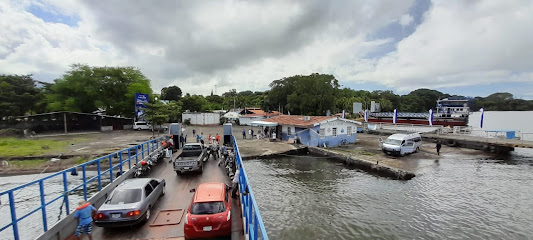
Fortress of the Immaculate Conception
Discover the rich history and stunning views at the Fortress of the Immaculate Conception in El Castillo, Nicaragua, a must-see tourist attraction.

Playa San Juan del Sur
Experience the breathtaking beauty and vibrant culture of Playa San Juan del Sur, a must-visit beach destination in Nicaragua.
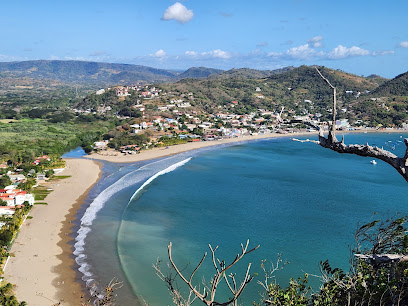
Indio Maíz Biological Reserve
Discover the breathtaking beauty and rich biodiversity of Indio Maíz Biological Reserve, Nicaragua's premier nature preserve for eco-tourism and adventure.
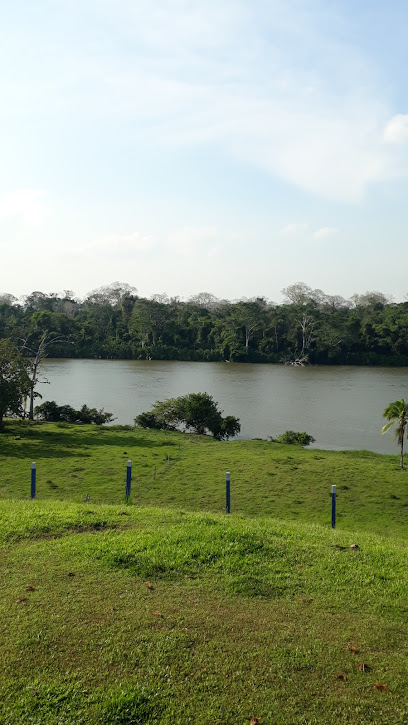
Ometepe Island
Explore the breathtaking landscapes and rich culture of Ometepe Island, a volcanic paradise in the heart of Lake Nicaragua, perfect for adventure and relaxation.
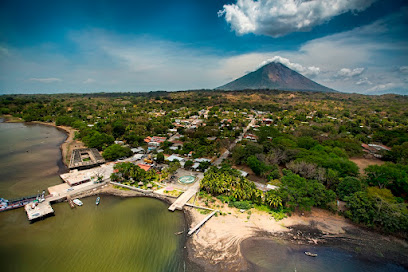
Rio San Juan Del Sur
Explore the hidden gem of Rio San Juan Del Sur, where pristine waters meet rich biodiversity and vibrant local culture in Nicaragua.
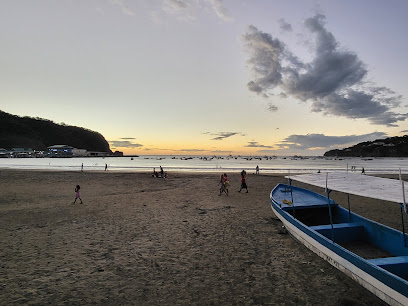
San Juan River
Discover the breathtaking beauty and adventure of San Juan River, a natural gem in Nicaragua, perfect for nature lovers and thrill-seekers alike.
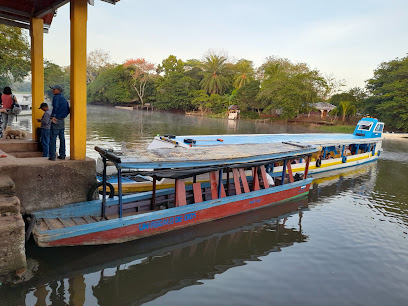
Eco Lodge in Nicaragua - Guacimo Lodge
Experience the heart of Nicaragua's rainforest at Guacimo Lodge, an eco-friendly retreat in the Indio Maiz Biosphere Reserve, perfect for nature enthusiasts.

The Rio Indio Adventure Lodge
Discover the serene beauty of Greytown at The Rio Indio Adventure Lodge, where nature meets adventure in a sustainable paradise.

la Esquina Del Lago
Discover the charm of La Esquina Del Lago, a serene lakeside hotel offering stunning views, comfortable accommodations, and access to the natural beauty of San Carlos.
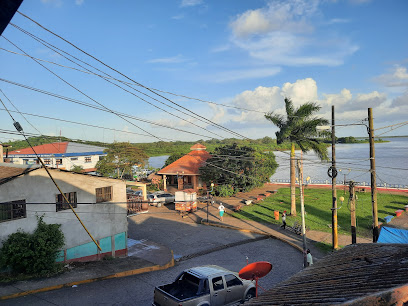
San Juan del Sur Bay
Explore the idyllic San Juan del Sur Bay, Nicaragua's coastal gem offering stunning beaches, vibrant sunsets, and a rich cultural experience.
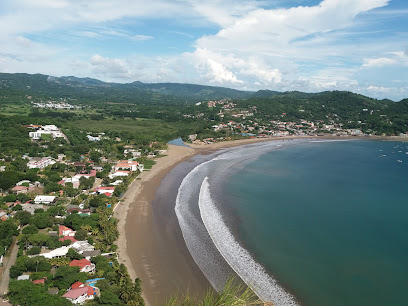
Cabañas Caiman, Los Guatuzos Nicaragua
Discover tranquility and adventure at Cabañas Caiman, where the beauty of Los Guatuzos and the Rio Papaturro create unforgettable memories.
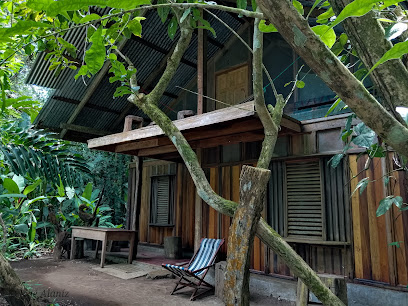
Tarpon Nicaragua
Experience world-class fishing and stunning landscapes at Tarpon Nicaragua, a hidden paradise in El Castillo, perfect for adventure and relaxation.
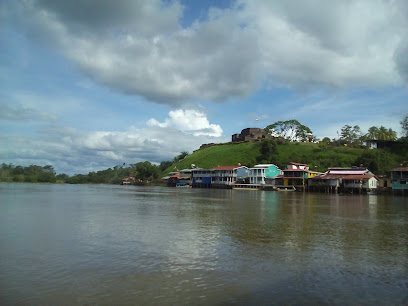
Unmissable attractions to see
Tarpon Nicaragua
Experience the thrill of fishing for tarpon in the breathtaking landscapes of El Castillo at Tarpon Nicaragua, a premier tourist destination.

Río San Juan de Nicaragua
Discover the enchanting Río San Juan de Nicaragua, where nature's beauty meets rich cultural heritage in a serene riverside escape.
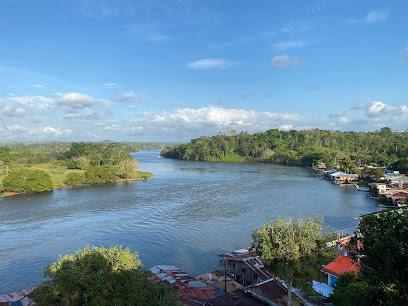
Mirador del Rio San Juan
Experience the stunning vistas of Mirador del Rio San Juan, a tranquil observation deck showcasing Nicaragua's natural beauty and rich biodiversity.
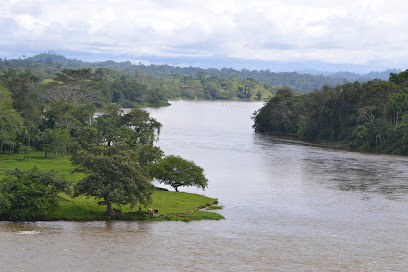
Reserva de la biosfera de Río San Juan
Discover the breathtaking biodiversity and serene landscapes of Nicaragua's Reserva de la Biosfera de Río San Juan, a paradise for nature lovers.
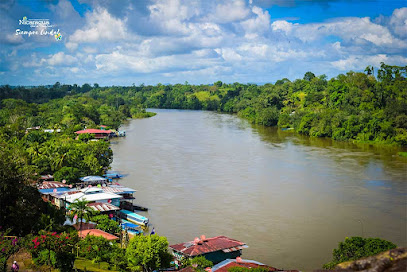
Essential places to dine
The Beach House Nicaragua
Discover exquisite dining and serene accommodations at The Beach House Nicaragua, your perfect getaway in San Juan del Sur.
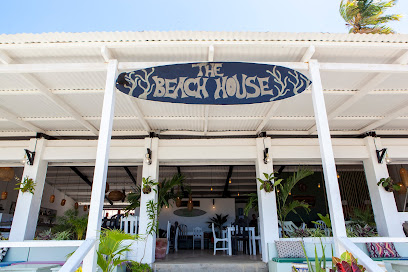
La Choza
Discover authentic Nicaraguan cuisine at La Choza in Nueva Guinea – where every dish tells a story.
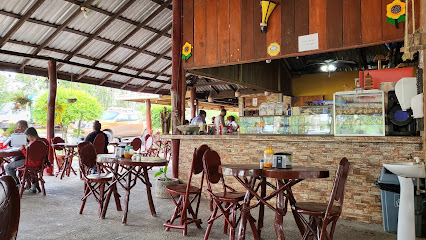
Restaurante Kaoma
Experience authentic Nicaraguan cuisine at Restaurante Kaoma in San Carlos, where local flavors meet stunning lakeside views.
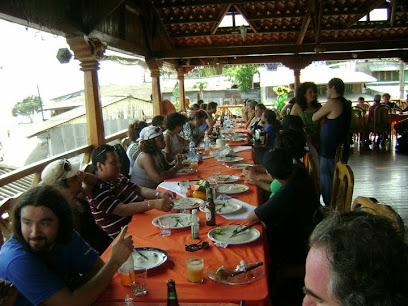
El Pollito Pescador
Experience authentic Nicaraguan flavors at El Pollito Pescador in San Juan del Sur - a seafood lover's paradise by the coast.
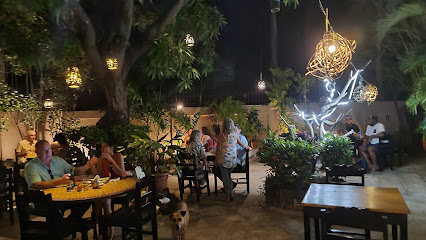
Restaurante Rancho de la Abuela
Experience authentic Nicaraguan cuisine at Restaurante Rancho de la Abuela in Nueva Guinea – a culinary gem filled with local flavors.

Restaurante Kung Fu
Experience authentic Asian cuisine with a twist at Restaurante Kung Fu in Nueva Guinea - where every meal is an adventure!
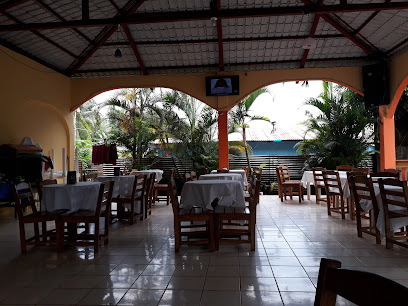
Restaurante Granadino
Discover authentic Nicaraguan flavors at Restaurante Granadino in San Carlos – where every meal tells a story.
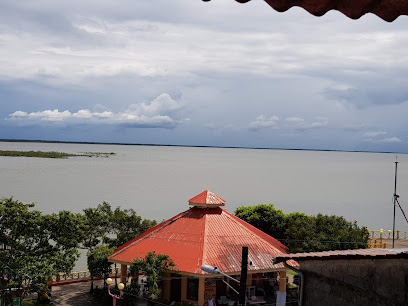
La Fortaleza
Discover authentic Nicaraguan flavors at La Fortaleza in San Carlos – where every meal is a celebration of local cuisine.
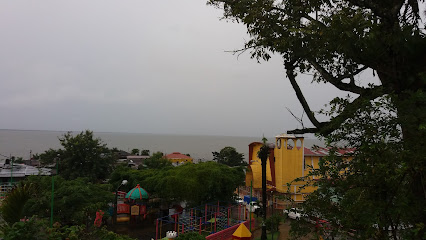
HOTEL Y BUFFET MANATÍ
Experience the authentic taste of Nicaragua at Hotel y Buffet Manatí in San Carlos – where culinary tradition meets warm hospitality.
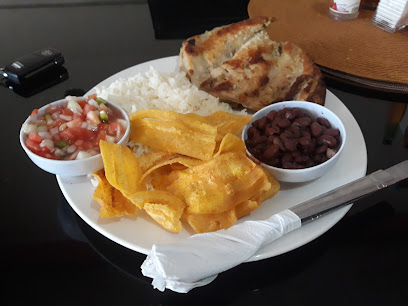
Bar y restaurante La Hacienda De Jenny
Experience the best of Nicaraguan cuisine at La Hacienda De Jenny - where every meal is a celebration of flavor and tradition.
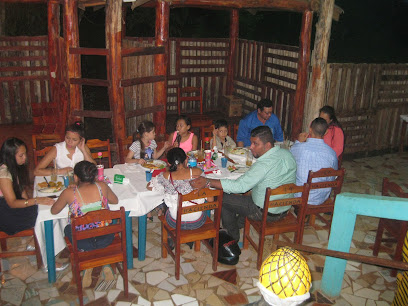
El Fogón De La Mami
Discover authentic Nicaraguan flavors at El Fogón De La Mami in El Castillo - a culinary haven for travelers seeking local delicacies.

Hotel y Restaurante Posada Del Rio
Experience tranquility at Hotel y Restaurante Posada Del Rio - your perfect getaway in El Castillo, Nicaragua with delightful dining options.

Borders Café
Discover the flavors of Nicaragua at Borders Café in El Castillo – where fresh ingredients meet warm hospitality.
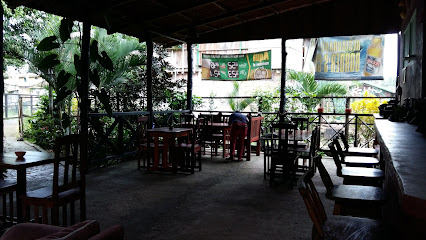
Restaurante La Casona Río San Juan
Experience authentic Nicaraguan cuisine at Restaurante La Casona Río San Juan - where flavor meets hospitality in San Carlos.
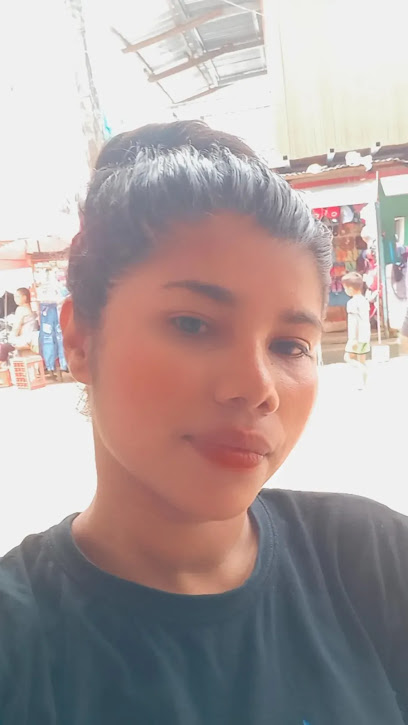
La cabaña
Discover authentic Nicaraguan cuisine at La Cabaña in Nueva Guinea—where tradition meets flavor in a cozy setting.
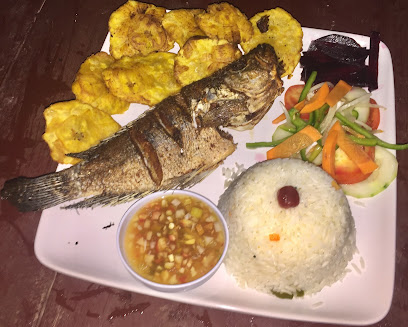
Markets, malls and hidden boutiques
Variedades Biancy
Explore unique Nicaraguan fashion at Variedades Biancy, a vibrant clothing store in Empalme de la Cruz Verde perfect for tourists.
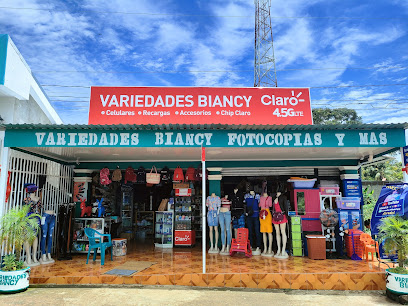
La Curacao
Explore La Curacao in San Carlos for quality appliances and furniture that embody the essence of Nicaraguan craftsmanship.
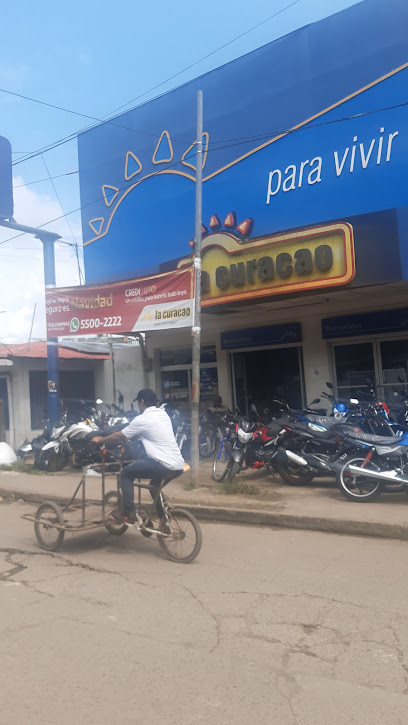
Fiestatex
Discover Fiestatex in San Carlos for all your party supply needs, featuring a wide selection of decorations, balloons, and themed essentials to elevate your celebrations.

Jossmari
Explore Jossmari in Los Chiles for stylish men's clothing that blends local flair with modern trends, perfect for every occasion.

El Armario de Marilyn
Explore El Armario de Marilyn, a unique dress store in San Carlos, Nicaragua, showcasing local fashion and craftsmanship for the discerning traveler.

Variedades Gómez
Discover unique clothing styles and vibrant local fashion at Variedades Gómez in San Carlos, a must-visit for any fashion enthusiast.
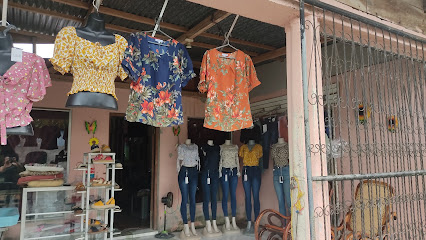
EL MEXICANO
Discover top-notch cell phone accessories at El Mexicano in San Carlos, where quality meets affordability for all your mobile needs.
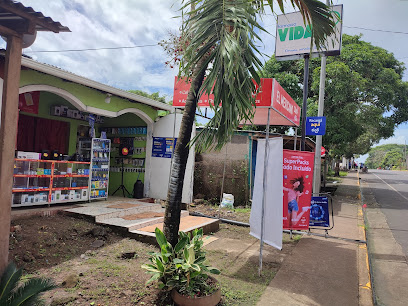
Minisuper Alexa G
Explore the heart of San Carlos at Minisuper Alexa G, your go-to store for local flavors and everyday essentials.
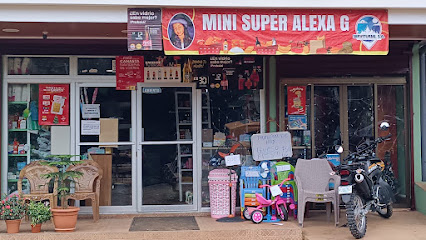
Variedades Sahily Sophia
Explore Variedades Sahily Sophia in San Carlos for a unique selection of women's clothing that captures Nicaraguan style and charm.

Moto Repuestos Aldoyael
Explore Nicaragua on two wheels with Moto Repuestos Aldoyael, your go-to motorcycle parts store in Laurel Galán for quality components and expert advice.
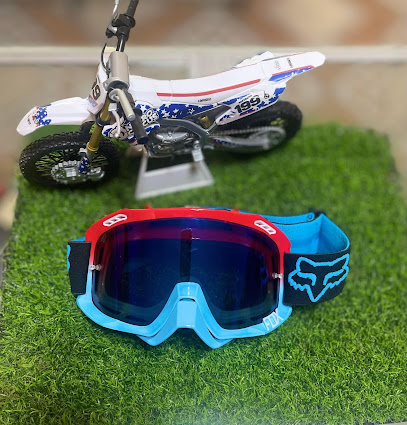
Shantifashion
Discover unique Nicaraguan fashion at Shantifashion, the local clothing store in Boca de Sabalos, celebrating artisan craftsmanship and vibrant styles.
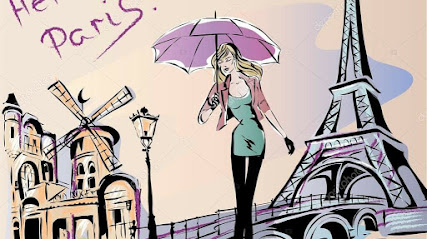
Tiendita Serrano Martinez
Discover the best formal wear at Tiendita Serrano Martinez in Los Chiles, where style meets local charm and quality craftsmanship.

Tienda la vanidosa
Discover unique, stylish dresses at Tienda la Vanidosa in San Carlos, where local craftsmanship meets modern fashion.

Fashion Store
Explore the trendiest clothing store in Laurel Galán, where local style meets vibrant fashion choices for every traveler.
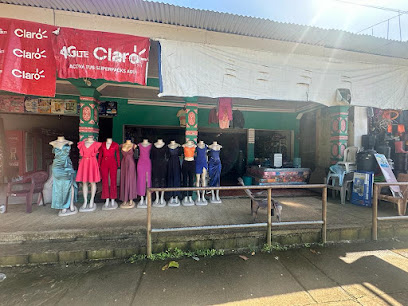
Librería Jamileth
Discover the literary charm of Librería Jamileth, a must-visit book store in Laurel Galán, offering a treasure trove of books and a cozy atmosphere.
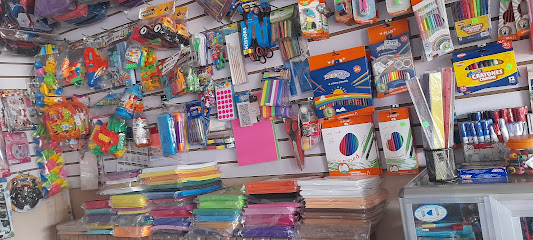
Essential bars & hidden hideouts
Bar El Tenampa
Discover the lively nightlife at Bar El Tenampa in San Miguelito, where vibrant drinks and a warm atmosphere invite you to unwind and socialize.

Perla Negra
Discover Perla Negra, San Carlos' premier cocktail bar, offering vibrant drinks and a lively atmosphere perfect for relaxation and socializing.
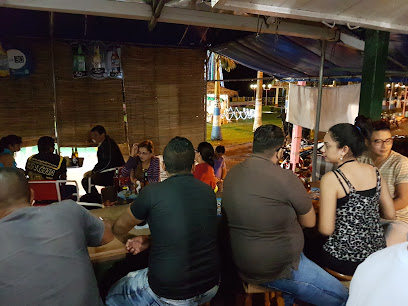
Spor bar la cabaña
Discover the lively spirit of Spor Bar La Cabaña in Mexico, where great drinks meet an unforgettable atmosphere for all visitors.
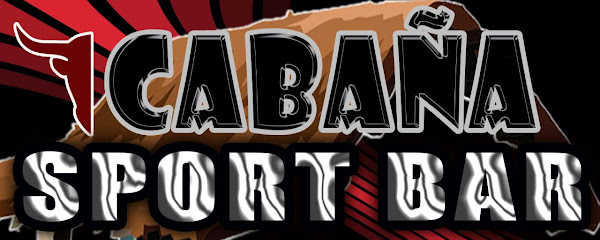
El Noah Noah
Experience the vibrant nightlife and local flavors at El Noah Noah, a lively bar in San Carlos, Nicaragua, perfect for unwinding after a day of adventure.

Bar La Culeca
Discover the vibrant culture and local flavors at Bar La Culeca in El Socorro, a must-visit bar for every traveler seeking authenticity.
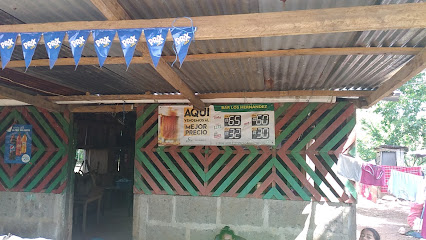
Pub La Azotea
Discover the vibrant sports bar atmosphere at Pub La Azotea in San Miguelito, where great drinks and live sports unite for an unforgettable experience.

Bar
Immerse yourself in the vibrant nightlife of El Chile at this lively bar, featuring local drinks, music, and a friendly atmosphere.

Me comen
Discover the vibrant ambiance of Me Comen, a local bar in Vivienda Progresiva perfect for socializing and enjoying refreshing drinks.

LAS VEGAS DEL SAN JUAN
Discover the vibrant flavors of Nicaragua at Las Vegas del San Juan, a top grill and bar in El Castillo, perfect for food lovers and travelers.

Bar y Restaurante El Paraiso
Discover the lively spirit of Nicaragua at Bar y Restaurante El Paraiso, where local cuisine and vibrant nightlife meet.

Bar el resbalón
Experience the lively ambiance and local flavors at Bar El Resbalón, a must-visit bar in Empalme de la Cruz Verde, Nicaragua.

Tipico el Ranchon
Experience the authentic taste of Nicaragua at Tipico el Ranchon, a lively bar and grill in San Miguelito, renowned for its grilled specialties.

Bar el bambú
Experience the vibrant local nightlife at Bar El Bambú in La Quesada, where tropical drinks meet the heart of Nicaraguan culture.

Bar Mexico
Experience the vibrant energy and local flavors at Bar Mexico, a must-visit destination for tourists seeking an authentic nightlife experience.

Bar El tucan.
Discover the vibrant nightlife and local culture at Bar El Tucan in Mexico, where refreshing drinks and lively atmosphere await.

Local Phrases about Rio San Juan
-
- HelloHola
[oh-lah] - GoodbyeAdiós
[ah-dee-ohs] - YesSí
[see] - NoNo
[noh] - Please/You're welcomePor favor/De nada
[por fah-vor/deh nah-dah] - Thank youGracias
[grah-see-ahs] - Excuse me/SorryPerdón/Lo siento
[pehr-dohn/loh see-ehn-toh] - How are you?¿Cómo estás?
[koh-moh ehs-tahs] - Fine. And you?Bien. ¿Y tú?
[byen. ee too] - Do you speak English?¿Hablas inglés?
[ah-blahs een-glehs] - I don't understandNo entiendo
[noh ehn-tee-ehn-doh]
- HelloHola
-
- I'd like to see the menu, pleaseQuisiera ver el menú, por favor
[kee-see-eh-rah behr ehl meh-noo, por fah-vor] - I don't eat meatNo como carne
[noh koh-moh kahr-neh] - Cheers!¡Salud!
[sah-lood] - I would like to pay, pleaseQuisiera pagar, por favor
[kee-see-eh-rah pah-gahr, por fah-vor]
- I'd like to see the menu, pleaseQuisiera ver el menú, por favor
-
- Help!¡Ayuda!
[ah-yoo-dah] - Go away!¡Vete!
[veh-teh] - Call the Police!¡Llama a la Policía!
[yah-mah ah lah poh-lee-see-ah] - Call a doctor!¡Llama a un médico!
[yah-mah ah oon meh-dee-koh] - I'm lostEstoy perdido
[ehs-toy pehr-dee-doh] - I'm illEstoy enfermo
[ehs-toy ehn-fehr-moh]
- Help!¡Ayuda!
-
- I'd like to buy...Quisiera comprar...
[kee-see-eh-rah kohm-prahr] - I'm just lookingSolo estoy mirando
[soh-loh ehs-toy mee-rahn-doh] - How much is it?¿Cuánto cuesta?
[kwan-toh kweh-stah] - That's too expensiveEso es muy caro
[eh-soh ehs moo-ee kah-roh] - Can you lower the price?¿Puede rebajar el precio?
[pweh-deh reh-bah-har ehl pree-see-oh]
- I'd like to buy...Quisiera comprar...
-
- What time is it?¿Qué hora es?
[keh oh-rah ehs] - It's one o'clockEs la una
[ehs lah oo-nah] - Half past (10)Las diez y media
[lahs dyehs ee meh-dee-ah] - MorningMañana
[mah-nyah-nah] - AfternoonTarde
[tahr-deh] - EveningNoche
[noh-cheh] - YesterdayAyer
[ah-yehr] - TodayHoy
[oy] - TomorrowMañana
[mah-nyah-nah] - 1Uno
[oo-noh] - 2Dos
[dohs] - 3Tres
[trehs] - 4Cuatro
[kwah-troh] - 5Cinco
[seen-koh] - 6Seis
[says] - 7Siete
[syeh-teh] - 8Ocho
[oh-choh] - 9Nueve
[nweh-veh] - 10Diez
[dyehs]
- What time is it?¿Qué hora es?
-
- Where's a/the...?¿Dónde está...?
[dohn-deh ehs-tah] - What's the address?¿Cuál es la dirección?
[kwal ehs lah dee-rehk-see-ohn] - Can you show me (on the map)?¿Me puedes mostrar (en el mapa)?
[meh pweh-dehs mohs-trar (ehn ehl mah-pah)] - When's the next (bus)?¿Cuándo es el próximo (autobús)?
[kwan-doh ehs ehl proh-kshee-moh (ow-toh-boos)] - A ticket (to ....)Un boleto (a ....)
[oon boh-leh-toh (ah)]
- Where's a/the...?¿Dónde está...?
History of Rio San Juan
-
Before the arrival of the Spanish, the area around Rio San Juan was inhabited by indigenous groups such as the Miskito and the Rama. These tribes were skilled in fishing and agriculture, and they lived in harmony with the lush tropical environment of the region.
-
In the early 16th century, Spanish explorers arrived in Central America. In 1524, Francisco Hernández de Córdoba founded the city of Granada on the shores of Lake Nicaragua. The strategic importance of the Rio San Juan as a waterway connecting the lake to the Caribbean Sea was soon recognized by the Spanish.
-
During the late 17th and early 18th centuries, Rio San Juan became a hotspot for pirate activity. Buccaneers and privateers were drawn to the area by the potential to intercept Spanish treasure fleets. Notably, the English pirate Henry Morgan captured the fortress of San Carlos in 1665.
-
In response to pirate threats, the Spanish constructed the Fortress of the Immaculate Conception, known as El Castillo, in 1675. This fortress played a crucial role in defending the region and controlling access to the vital waterway. It stands today as a well-preserved historical site.
-
In 1780, during the American Revolutionary War, British forces led by Horatio Nelson attempted to capture El Castillo. Despite initial success, the British were ultimately repelled by the Spanish defenders, marking a significant event in the fortress's storied history.
-
In the mid-19th century, the Rio San Juan region gained international attention as a potential transit route between the Atlantic and Pacific oceans. Cornelius Vanderbilt's Accessory Transit Company operated a route through the river, facilitating the transport of gold prospectors during the California Gold Rush.
-
Throughout the 19th century, the Rio San Juan area was the subject of territorial disputes between Nicaragua and the British-controlled Mosquito Coast. The Clayton-Bulwer Treaty of 1850 and the Treaty of Managua in 1860 eventually resolved these disputes, affirming Nicaraguan sovereignty over the region.
-
In the 20th century, the Rio San Juan region saw gradual development with the establishment of small towns and agricultural communities. The construction of infrastructure, such as roads and bridges, facilitated greater connectivity and economic growth.
-
In recent decades, Rio San Juan has gained recognition for its rich biodiversity and pristine natural environments. Efforts to promote ecotourism have led to the creation of protected areas, such as the Indio Maíz Biological Reserve, ensuring the preservation of the region's unique flora and fauna.
Rio San Juan Essentials
-
Rio San Juan is located in the southern part of Nicaragua, near the border with Costa Rica. The nearest international airport is Augusto C. Sandino International Airport in Managua, approximately 290 kilometers away. From Managua, you can take a domestic flight to San Carlos, the main town in the Rio San Juan department. Alternatively, you can travel by bus or private car from Managua to San Carlos, which typically takes around 6-7 hours. Boat services are also available from San Carlos that navigate the Rio San Juan river to various destinations such as El Castillo and Greytown.
-
Transportation within Rio San Juan includes a mix of boats, buses, and taxis. Boats are a primary mode of transport for navigating the river and reaching remote areas. Public buses and minibuses (known locally as 'colectivos') connect the main towns and villages. Taxis are available in larger towns like San Carlos and can be hired for local travel or day trips. For those looking for more flexibility, renting a car in Managua and driving to Rio San Juan is an option, although road conditions can be challenging.
-
The official currency in Nicaragua is the Nicaraguan Córdoba (NIO). Credit cards are accepted in some hotels, restaurants, and shops in larger towns, but it is advisable to carry cash, especially when venturing into more remote areas. ATMs are available in San Carlos, but it is prudent to withdraw sufficient cash in Managua before traveling. U.S. dollars are also widely accepted, but it’s always best to have some local currency on hand for smaller transactions.
-
Rio San Juan is generally a safe destination for tourists, but standard travel precautions should always be taken. Some areas, particularly near the border with Costa Rica, have higher crime rates, including petty theft and robberies targeting tourists. It is advisable to avoid traveling alone at night and to stay vigilant in crowded places. Always secure your belongings and avoid displaying valuable items. Check with local authorities or your hotel for up-to-date safety information.
-
In case of emergency, dial 118 for police assistance or 128 for medical emergencies. San Carlos has a hospital and several clinics that can handle most medical issues. It is highly recommended to have travel insurance that covers medical emergencies. For minor health issues, pharmacies are available in San Carlos and other larger towns. Make sure to carry a basic first aid kit, especially if you plan to explore remote areas.
-
Fashion: Do dress modestly, especially in rural areas. Light, breathable clothing is recommended due to the tropical climate. Avoid wearing flashy jewelry. Religion: Do respect local religious practices and traditions. When visiting churches or religious sites, dress conservatively. Public Transport: Do be patient and courteous when using public transportation. Don’t be surprised if schedules are not strictly followed. Greetings: Do greet people with a handshake or a friendly 'Hola'. A polite nod or a smile is also appreciated. Eating & Drinking: Do try local dishes such as 'gallo pinto' and 'vigaron'. Don’t refuse food or drink offered by locals, as it is considered impolite.
-
To experience Rio San Juan like a local, visit the markets in San Carlos where you can buy fresh produce and local crafts. Engage with locals, who are often friendly and willing to share their knowledge about the area’s history and culture. Don’t miss a boat trip on the river to see the stunning natural scenery and wildlife. Visit the historic town of El Castillo, home to the 17th-century fortress, and explore the Indio Maíz Biological Reserve for a unique adventure.
Trending Landmarks in Rio San Juan
-
Reserva Natural Ojo de Agua
-
Cristo de La Misericordia
-
Ometepe
-
Fortress of the Immaculate Conception
-
Playa San Juan del Sur
-
Indio Maíz Biological Reserve
-
Ometepe Island
-
Rio San Juan Del Sur
-
San Juan River
-
Eco Lodge in Nicaragua - Guacimo Lodge
-
The Rio Indio Adventure Lodge
-
la Esquina Del Lago
-
San Juan del Sur Bay
-
Cabañas Caiman, Los Guatuzos Nicaragua
-
Tarpon Nicaragua
Nearby Cities to Rio San Juan
-
Things To Do in Monteverde
-
Things To Do in San Jose
-
Things To Do in Liberia
-
Things To Do in Guanacaste
-
Things To Do in Jaco
-
Things To Do in Ometepe
-
Things To Do in Playa Flamingo
-
Things To Do in Manuel Antonio
-
Things To Do in San Juan del Sur
-
Things To Do in Rivas
-
Things To Do in Tamarindo
-
Things To Do in Granada
-
Things To Do in Puerto Viejo
-
Things To Do in Masaya
-
Things To Do in Managua






